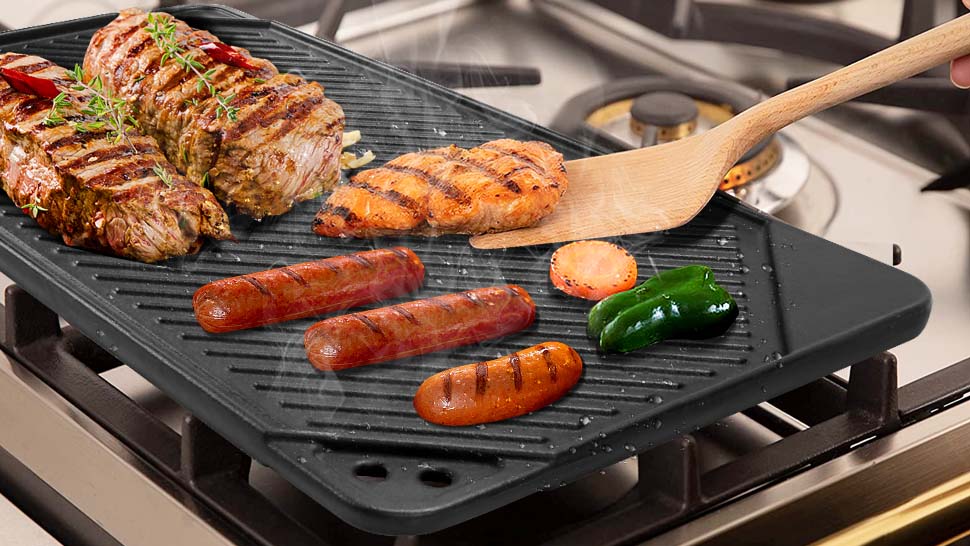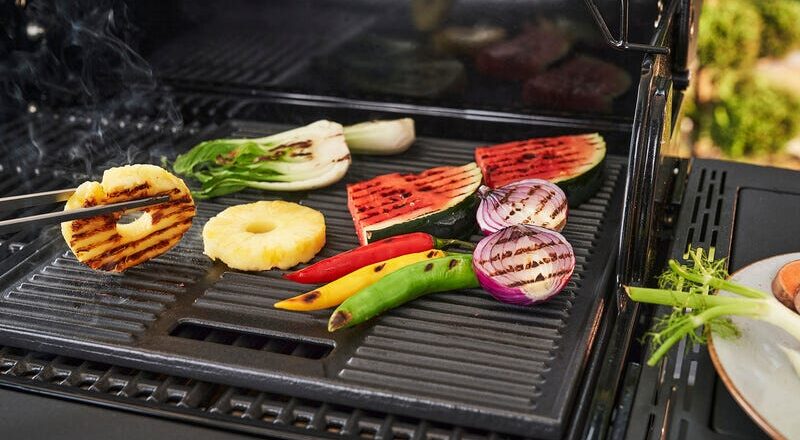Reversible griddles are a versatile tool in any kitchen, offering the ability to cook a wide range of foods. However, maintaining them can be a challenge if not done correctly. To extend the life of your griddle and ensure optimal performance, it’s crucial to understand the reversible griddle maintenance tips that will keep it in top condition.

Understanding Your Griddle
Before diving into maintenance, it’s important to understand the type of griddle you own. Reversible griddles come in various materials, including cast iron, stainless steel, and non-stick surfaces. Each material requires specific care and maintenance practices to ensure longevity and performance.
Identifying the Material
Knowing whether your griddle is made of cast iron or another material is essential. Cast iron griddles are known for their heat retention and even cooking surface, making them a popular choice for many. However, they require regular seasoning to prevent rust and maintain their non-stick properties. On the other hand, stainless steel and non-stick griddles may need different cleaning techniques.
Cleaning Your Griddle
Regular cleaning is a key component of reversible griddle maintenance tips. After each use, ensure your griddle is thoroughly cleaned to prevent food residues from building up, which can affect the taste of future meals and damage the surface over time.
Cleaning Cast Iron Griddles
For cast iron griddles, avoid using soap as it can strip the seasoning. Instead, use a stiff brush and hot water to scrub the surface, followed by drying it completely to prevent rust. For more detailed guidance, check out these griddle care tips.
Cleaning Non-Stick and Stainless Steel Griddles
Non-stick and stainless steel griddles can usually be cleaned with mild soap and warm water. Be sure to use a soft sponge to avoid scratching the surface. Avoid abrasive cleaners and tools that can damage the non-stick coating or stainless steel finish.
Seasoning Your Griddle
Seasoning is crucial for cast iron griddles. It involves applying a thin layer of oil to the surface and heating it, allowing the oil to polymerize and create a protective, non-stick layer. This process not only prevents rust but also enhances the cooking surface.
How to Season
To season your griddle, clean it thoroughly and dry it completely. Apply a thin layer of vegetable oil or a specialized seasoning oil. Then, heat the griddle in an oven or on a stovetop until the oil begins to smoke. Allow it to cool before wiping away any excess oil. For a deeper dive into seasoning, visit this griddle buying guide.
Storage Tips for Longevity
Proper storage is another important aspect of reversible griddle maintenance tips. Ensure your griddle is completely dry before storing it to prevent rust. If possible, store it in a dry, cool place. For cast iron, a light layer of oil can be applied before storage to maintain the seasoning.
Storing Cast Iron
When storing cast iron, consider using paper towels between stacked items to protect the surface. This simple step can prevent scratches and other damage. More storage tips can be found in this tailgating guide.
Common Mistakes to Avoid
Avoid certain common pitfalls to preserve your griddle’s quality. For instance, do not soak your griddle in water, as this can lead to rust, especially for cast iron. Additionally, avoid using metal utensils that can scratch the surface of non-stick griddles.
Frequent Errors
One frequent mistake is not allowing the griddle to cool before cleaning. Sudden temperature changes can lead to warping or cracking. For more on preventing these issues, explore this material guide.
Routine Inspection
Regularly inspect your griddle for signs of wear and tear. Check for cracks, rust, or damage to the non-stick coating. Early detection can prevent minor issues from becoming major problems.
What to Look For
Check the surface for unevenness or discoloration, which can indicate a need for re-seasoning or more thorough cleaning. For more tips on what to watch for, check out this burger cooking guide.
Environmental Considerations
Consider the environment in which you use your griddle. Elements like humidity and temperature can affect its performance and longevity. In high-humidity areas, ensure your griddle is thoroughly dried and stored correctly to prevent rust.
Outdoor Use
If you frequently use your griddle outdoors, be mindful of weather conditions. Protect it from rain and moisture whenever possible. For more outdoor cooking tips, explore this grilling recipe guide.

FAQ Section
How often should I season my cast iron griddle?
Ideally, you should season your cast iron griddle every few uses to maintain its non-stick surface and prevent rust.
Can I use metal utensils on my griddle?
It’s best to avoid metal utensils on non-stick and stainless steel griddles as they can scratch and damage the surface. Opt for wooden or silicone tools instead.
What is the best oil for seasoning a griddle?
Vegetable oil or flaxseed oil are popular choices for seasoning cast iron griddles due to their high smoke points and effectiveness in creating a durable non-stick layer.
This article contains affiliate links. We may earn a commission at no extra cost to you.

